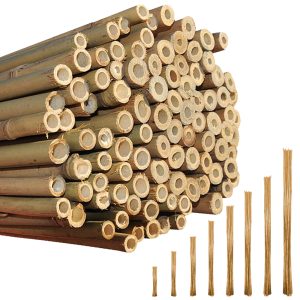How to:
Controlling
Brown Rot
Nothing beats the rewarding taste of your own freshly picked home grown fruit. Apples, pears, plums and cherries are all easy to grow in the UK climate. I have a total of twenty eight fruit trees trained in a variety of shapes from fans, espaliers and bushes through to the commercial spindle. Each unique shape carefully maintained to maximise fruiting and help prevent diseases getting a foothold.
Causes of Brown Rot
Anyone who grows fruit will tell you that fungal disease can be a constant problem with fruit. One of the most problematic of these diseases in late summer and autumn is brown rot. Depending on the type of fruit brown rot is caused by Monilinia laxa or M. fructigena. In a wet humid year it can easily destroy a whole crop of plums. The main problem comes from the fungus infecting the newly formed fruit before they are even fully ripe.
The disease is most easily noticed during the fruiting season. It can spread quickly within the orchard, but you will never fully control it without chemical sprays. Sadly these types of spray are only available to commercial growers. However with a little knowledge of its lifecycle it can be kept in check and its affects minimised.
Fruit is often infected as a consequence of a pest attack letting the fungus enter the fruits interior. Once infected it quickly rots the fruit with plums tending to go a purple colour, and cherries, apples and pears turning brown. Pustules quickly form on the fruits surface which release millions of spores which, in turn, then infect surrounding fruits. Where fruits touch the disease will spread from fruit to fruit until the whole bunch becomes a rotting mass covered with spores.


Controlling the spread
You can help to control the spread through the correct pruning of the tree canopy. This helps to increase airflow and therefore reduce the humidity which can help to reduce the spread. When you notice diseased fruit you need to remove them and bury them or dispose of them in the green waste bin straight away.
Avoid composting them as the spores can survive and re-infect the fruit tree through airborne released spores the following season. Rain hitting the fruit can also release spores so don’t water the tree canopy with sprinklers etc. This is especially important for plums and cherries where increased humidity in the canopy can very quickly lead to a total crop loss.
You can slow down the spread of disease at the cropping stage quite easily. Simply removing diseased fruits promptly and cleaning up fallen infected fruit go a long way to controlling further spread. Doing this will help to break the cycle which is essential in controlling the spread of any disease.
When diseased fruit is left on the tree they become ‘mummified’, completely dried out and firmly attached to the tree. This is the source of re-infection for the following seasons crop so all of this type of fruit should be removed in late winter and disposed of. I like to burn these on a bonfire with the fruit tree pruning’s in late winter to ensure the best chance of a clean start the following season.
Other sources of disease
Remove any apple skins and the remains of any apples that have been left out for birds to eat over winter. Surprisingly, these too can be a source of infection. Stored apples that have gone rotten should not be composted as these can also release spores and re-infect crops the following spring.
The last sign to look out for is blossom wilt in the tree and shoot dieback during the summer. This is will be evident just after flowering has completed and is usually the result of a mummified fruits releasing spores. This happens early in the season and the reinfection in this case takes place via the flowers. If you see any die back immediately remove it to break the lifecycle and stop
Brown Rot can live in fruit trees or on plant debris on the surrounding soil all year round. Good hygiene in the garden is an important part of breaking the life cycle of the fungus. Simply clearing up the remains of the previous crop and pruning out diseased shoots before the first growth starts in spring will help ensure a healthy start for the following season.


Using traps
Both apple and plumb moth traps are an effective way to help control codling, winter and plum moths. More importantly their purpose helps to alert you to the presence of these unwanted visitors when hung in amongst the trees. The traps are coated with a sticky substance that attracts the moths to trap them and prevent them breeding. Hang them in the trees from late May onwards to check on the spread of the male moths.
Chickens and their scratching and foraging activities are a really effective control for female winter moths. The female is flightless and can be found around the tree trunks. Glue bands are another tried and tested effective control in combatting the female moths. The glue bands are particularly effective for controlling the number of female moths. When wrapped around trunk of the tree they trap the female winter moths as they climb to lay their eggs.
When all is said and done brown rot may be a persistent survivor in the fungal world. But with a little knowledge you can help minimise the damage it causes. It may take a little effort to help control its spread, but you can also significantly increase your harvest of delicious home grown fruit.

I’m based in Shropshire, and I’ve been a keen gardener since childhood. Throughout my career I have raised plants commercially, landscaped gardens, taught horticulture, built the odd show garden and managed public parks where I helped popularise the use of wildflowers. My passion has always remained with growing fruit and vegetables in my own garden and looking after my rare breed chickens.
Chris

I’m based in Shropshire, and I’ve been a keen gardener since childhood. Throughout my career I have raised plants commercially, landscaped gardens, taught horticulture, built the odd show garden and managed public parks where I helped popularise the use of wildflowers. My passion has always remained with growing fruit and vegetables in my own garden and looking after my rare breed chickens.
Chris
Copy the code below for your 10% off discount:
ELIXIR10

Share This Blog
Featured Products
-

Bamboo Garden Canes | Heavy-Duty Plant Support | 2ft – 10ft
£5.49 – £129.99 Select options This product has multiple variants. The options may be chosen on the product page -

Fish, Blood & Bone | Multi Purpose Organic Fertiliser / Plant Food | NPK 5-5-6 | 25kg treats 360sq.m when applied at 70gsm
£5.99 – £40.99 Select options This product has multiple variants. The options may be chosen on the product page -

Woven Ground Cover with Optional Pegs & Staples
£4.99 – £199.99 Select options This product has multiple variants. The options may be chosen on the product page -

Coir Organic Compost Blocks | Premium Peat-Free Growing Media | 10L &75L
£5.99 – £169.99 Select options This product has multiple variants. The options may be chosen on the product page -

Volcanic Rock Dust Organic Fertiliser | Soil Re-Mineraliser and Compost Activator
£5.99 – £34.99 Select options This product has multiple variants. The options may be chosen on the product page -

Seaweed Meal Fertiliser | 500g-20kg | Plant Feed, Lawn Conditioner & Soil Fertiliser
£6.99 – £99.99 Select options This product has multiple variants. The options may be chosen on the product page -

Bathgate Champions Blend 50L Bags – Multiple Quantities Available
£20.99 – £229.99 Select options This product has multiple variants. The options may be chosen on the product page -

EX4 General Purpose Premium Fertiliser | 5-7.5-10 + Trace Elements | Covers up to 750m² | 100g – 25kg Supplied in Bag or Tub
£5.99 – £63.99 Select options This product has multiple variants. The options may be chosen on the product page -

Wooden Tree Stakes/Plant Supports | 75cm & 135cm Sizes
£8.99 – £1,272.99 Select options This product has multiple variants. The options may be chosen on the product page










